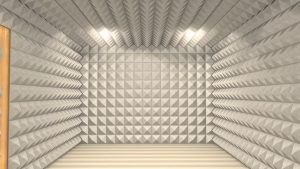 Written by Foam Factory, Inc.
Written by Foam Factory, Inc.
The concept of sound proofing seems simple enough. Once you get into the details, it does start to get a little complicated. There are different products at various price points for each component of the room. It is not as simple as just putting some sound deadening foam. The entire process needs to be carefully thought out and executed to ensure that no sound gets in or out.
First, there is a common misconception that soundproofing and sound absorption are the same things. Sound absorption uses materials like acoustic foam panels to absorb ambient noise and reduce acoustic reflection, while soundproofing is how to prevent sound from coming in.
Mass
A solid object will block airborne sound from coming through the walls. The more solid the material, the more sound it will block. For example, a concrete wall will block more sound than drywall. In cases where there is existing drywall, and you don’t want to replace them with concrete, use sounds deadening foam on the walls to increase the amount of sound blocked.
Damping
The next part of sound proofing is called damping. It is akin to tapping a wine glass and then stopping the noise with your hand. Achieving this in the real world involves using a damping viscoelastic adhesive set between two surfaces.
Decoupling
Lastly, there is the decoupling. The sound is transmitted through the building structure. The only way to stop that from happening is to create air gaps between the surfaces. This is best done during construction, as doing so afterward involves breaking walls. It is essentially creating a room within a room.
____________________________________________
The Foam Factory is a specialist company when it comes to providing foam replacement solution. They also offer acoustic foam for different indoor soundproofing projects.